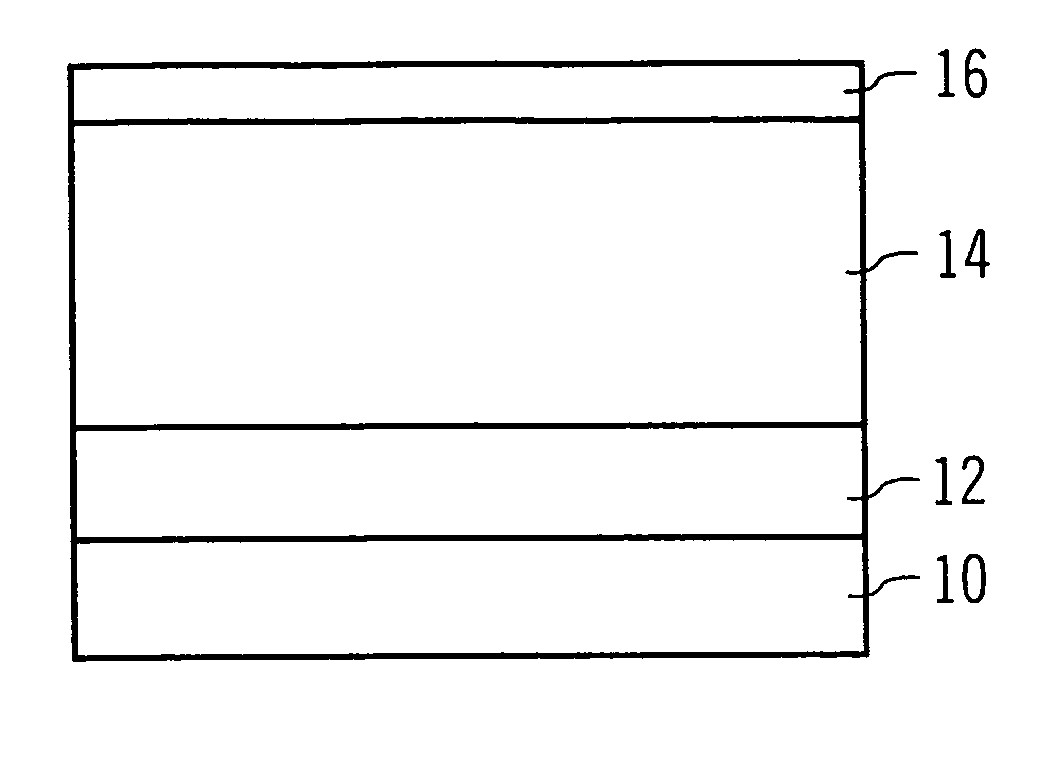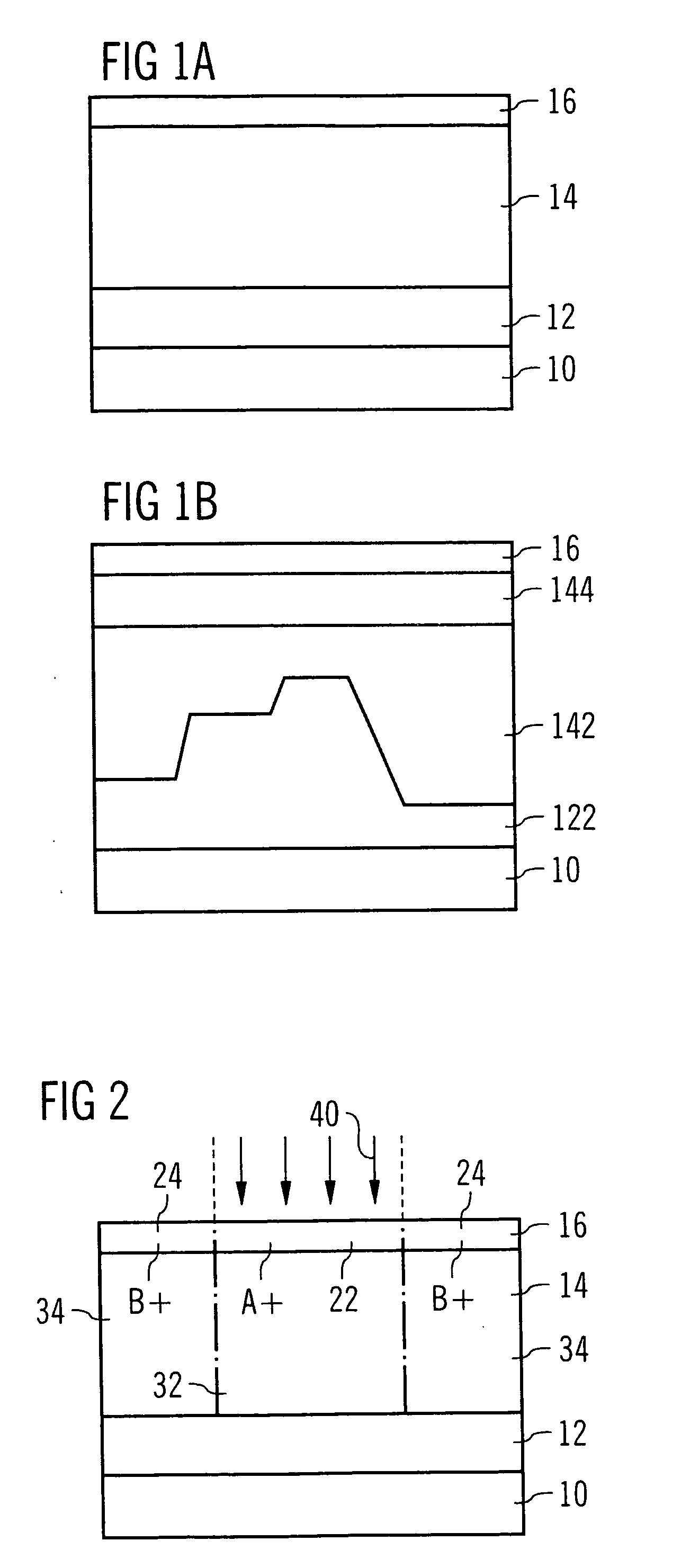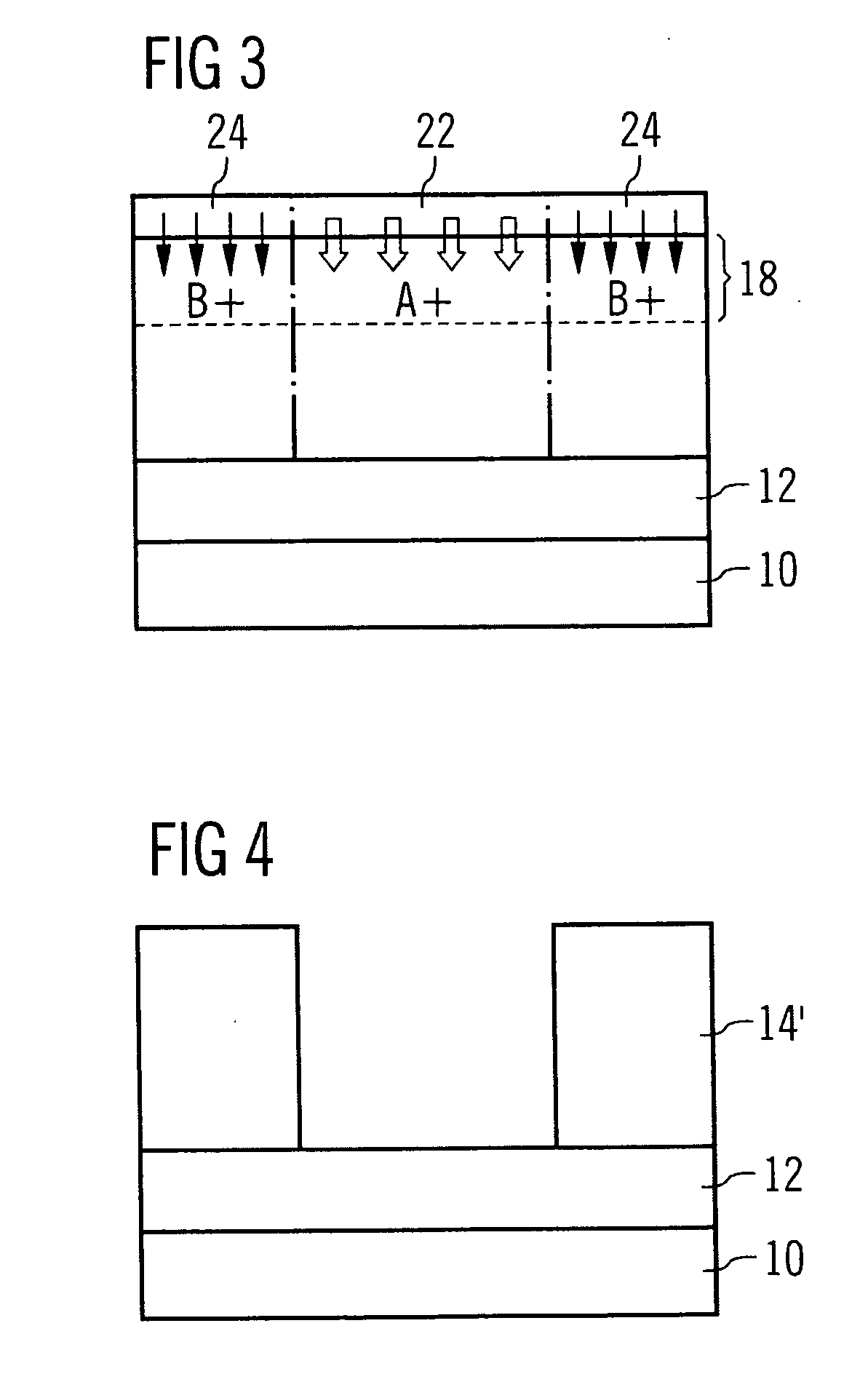Photosensitive coating for enhancing a contrast of a photolithographic exposure
a technology of photolithographic exposure and coating, which is applied in the direction of photographic processes, instruments, electrical equipment, etc., can solve the problems of poorly transparent or even opaque photoinsensitive resist film to the radiation used during exposure, and achieve the effects of avoiding the effect of t-topping, reducing or neutralizing the concentration of alkaline additives, and weakening acidity
- Summary
- Abstract
- Description
- Claims
- Application Information
AI Technical Summary
Benefits of technology
Problems solved by technology
Method used
Image
Examples
Embodiment Construction
[0111] In FIG. 1 different embodiments of a photosensitive coating serving as a contrast-enhancing layer are shown. FIG. 1A shows a case wherein a layer 12 of a material to be structured (etched) such as an oxide, a nitride, a metal, polysilicon, etc., is deposited on a substrate 10, which may refer to monocrystalline silicon. A resist film 14 is spun on the layer 12. The resist film 14 is formed of any conventionally known type of resist material, e.g., positive or negative, Novolak-based, chemically amplified, etc.
[0112] Further, a photosensitive coating 16 is applied upon the resist film 14. This coating 16 comprises a water-soluble base polymer, e.g., a polyacrylic acid, a photolytic acid generator, e.g., a Triphenylsulphonium salt, and an alkaline additive, e.g., Trioctylamine. In order to deposit the coating 16 upon the resist film 14, the ingredients as described above are dissolved in a solvent, which is a mixture of water and isopropanole according to this embodiment. This...
PUM
| Property | Measurement | Unit |
|---|---|---|
| refractive index | aaaaa | aaaaa |
| temperatures | aaaaa | aaaaa |
| temperatures | aaaaa | aaaaa |
Abstract
Description
Claims
Application Information
 Login to View More
Login to View More - R&D
- Intellectual Property
- Life Sciences
- Materials
- Tech Scout
- Unparalleled Data Quality
- Higher Quality Content
- 60% Fewer Hallucinations
Browse by: Latest US Patents, China's latest patents, Technical Efficacy Thesaurus, Application Domain, Technology Topic, Popular Technical Reports.
© 2025 PatSnap. All rights reserved.Legal|Privacy policy|Modern Slavery Act Transparency Statement|Sitemap|About US| Contact US: help@patsnap.com



